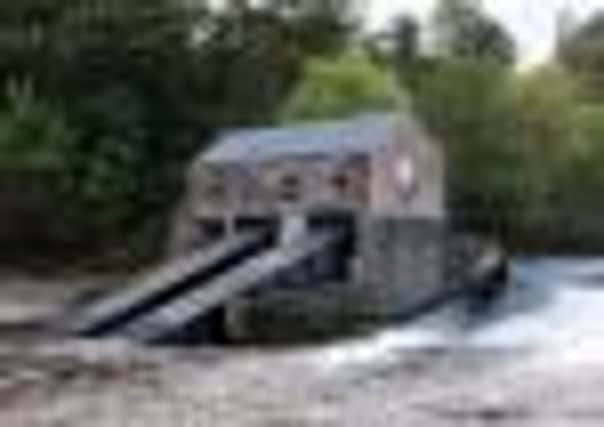Turn of the screw puts historic site back into use


Now, more than a century after it was first built, it has been given a new lease of life – surging out of retirement as a hydroelectric power station following a £500,000 revamp.
Boasting the stunning Linton Falls as a backdrop, the unusual red-brick building will be used to generate green energy by engineering and construction company and owners JN Bentley.
Advertisement
Hide AdAdvertisement
Hide AdHaving received consent from English Heritage and the Yorkshire Dales National Park Authority, together with licensing from the Environment Agency, JN Bentley began working on the site earlier this year in an attempt to restore the site, and once again, produce electricity for Grassington and the surrounding area.
English Heritage worked closely with the company to ensure the restoration works were carried out in way that was sympathetic to its national park surroundings.
Neil Redfern, team leader for English Heritage in Yorkshire, said: “We’ve been delighted to help bring this important scheduled monument back into use and excited that it has been achieved through harnessing its original intended purpose. Linton Falls can tell us much about the early days of electricity generation – it was a pioneering site in the past and is again 100 years after it was first built.
“We hope it will be generating power for years to come.”
The scheduled monument, which is offered the same protection as Clifford’s Tower in York, was built in 1909 to bring the first electricity to the village of Grassington, but had been abandoned and left to the elements since 1948 when the National Grid came into existence.
Advertisement
Hide AdAdvertisement
Hide AdThe three-year restoration project was completed this week and the site will now use two new Archimedean screws to harness the River Wharfe’s power and create the electricity which will be fed into the National Grid.
The plant will generate enough renewable and clean energy to power 90 homes and save the environment 216 tonnes of CO2 emissions per year, when compared with fossil fuel generation.
Mr Redfearn said: “To me the really brilliant thing is they haven’t gone back to using old equipment. What they have done instead is put two new Archimedean screw turbines on the outside of the building. This has a low impact on the historic building and it takes this 2,000-year-old technology, applies it to a building and gives it a new use for future generations.
“It is now up and running – water is charging through it and it’s generating power. You can see bits of evidence of the old machinery and how it used to work but the machinery we were able to put in is much smaller than it would have needed to be in the past.
Advertisement
Hide AdAdvertisement
Hide Ad“It’s a completely amazing building and is something that you wouldn’t expect to see in the Yorkshire Dales. I think it’s absolutely brilliant that it has been restored. We believe the best use for a historic building is the original use it was designed for and I have no doubt it could be put to any other use.”
Earlier this year JN Bentley established the Linton Falls Hydroelectric Power Company specifically to develop, own and operate hydroelectric power stations. The Linton Falls scheme is the first hydroelectric power project that saw the company not only designing and constructing such a project, but also owning and operating it.
The scheme, valued at over £500,000, involved the careful restoration of the turbine house, using materials to match the original building, as well as the installation of the two screw turbines.
The company’s director Jonathan Cain said: “We are extremely pleased to have helped preserve such an important industrial monument in the Yorkshire Dales. It’s been a significant investment for us – but one we think will also bring a great deal of benefit to the local community.
Advertisement
Hide AdAdvertisement
Hide Ad“We’re already planning a number of open days for local schools in the spring of next year and will be opening up the power station to members of the public as part of the Heritage Open Days National Partnership.”
Invention from ancient world
Archimedean screws have been given their name because they rely on a device invented in Ancient Greece by mathematician, physicist and engineer Archimedes of Syracuse.
Archimedes, who was born around 287 BC, is credited with inventing the screw originally to move water upwards from the hold of a ship.
This technology has been adapted at Linton Falls to reverse the principle and move water down the weir.
Advertisement
Hide AdAdvertisement
Hide AdThe River Wharfe can send more than five tonnes of water down the two Archimedean screws every second – forcing them to rotate.
Generators extract the energy made by the turning of the screws, turning it into electricity. Each screw measures 2.4m in diameter.
The size and shape of the screws mean that smaller objects – like leaves or fish – can pass through them easily and safely.